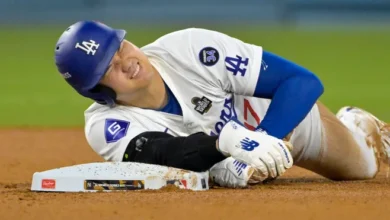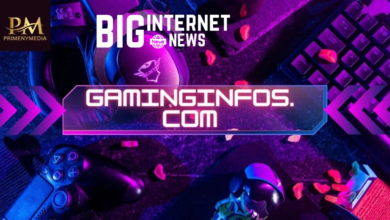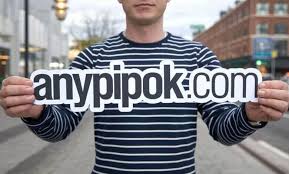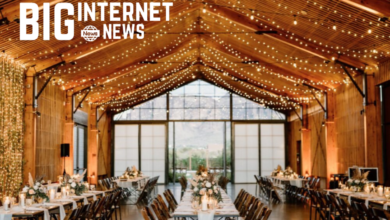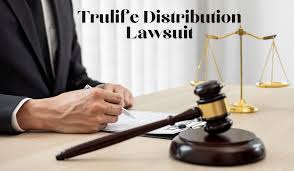Bubble Font: The Ultimate Guide to Bold, Fun Typography

bubble font Typography is a powerful element in design, capable of setting the tone, mood, and even brand identity of a project. Among the vast range of typefaces available, the bubble font stands out for its playful, bold, and eye-catching appeal. Often associated with fun, youthfulness, and creativity, bubble fonts have found their place in everything from comic books to branding. In this comprehensive guide, we’ll explore everything you need to know about bubble fonts—from their definition and applications to tips on using them effectively in your own designs.
1. Introduction to Bubble Font
What is Bubble Font?
Bubble fonts are a type of playful, rounded typography characterized by soft curves and inflated, bubble-like shapes. These fonts often resemble balloons or bubbles, with bold, thick strokes and a whimsical, friendly appearance. The letters in bubble fonts are typically wide and spacey, often giving the impression of being three-dimensional. This unique, fun aesthetic makes bubble fonts a popular choice for projects where lightheartedness and approachability are key.
The origins of bubble fonts can be traced back to comic book lettering and 1960s pop culture. They gained popularity in advertisements and children’s media, where bold and colorful visuals were used to attract attention. Over the years, bubble fonts have evolved, becoming an essential part of graphic design, especially for projects that target a younger audience or aim to convey a sense of fun and energy.
Why Choose Bubble Font?
Bubble fonts are often chosen for their bold, attention-grabbing appeal. They are ideal for designs that need to evoke a sense of fun, excitement, or playfulness. For example, they are commonly used in advertising, children’s books, movie posters, and even in product packaging. The exaggerated, soft appearance of bubble fonts is perfect for creating visual contrast in a crowded design or making a statement.
In addition to being visually striking, bubble fonts also evoke a sense of nostalgia. Their connection to classic comic strips, cartoons, and retro pop art makes them instantly recognizable and relatable, especially to audiences who associate them with carefree moments or childhood memories.
2. How to Use Bubble Fonts in Design
Designing with Bubble Fonts
Bubble fonts are often seen in bold titles, logos, and attention-grabbing headlines. Their bold, inflated nature makes them ideal for creating impactful focal points within a design. When using bubble fonts, it’s important to ensure they don’t overwhelm the rest of the content. A good rule of thumb is to pair bubble fonts with simpler, more traditional typefaces to provide balance. This approach allows the playful nature of bubble fonts to shine without taking over the entire design.
One great use of bubble fonts is in advertisements, especially those targeting younger demographics. Whether you’re designing a flyer, website, or social media post, bubble fonts can help capture attention quickly. However, it’s important to remember that bubble fonts should reflect the tone of the project. In playful, energetic campaigns, they work wonders, but they may be out of place in more serious contexts.
When to Avoid Bubble Fonts
While bubble fonts are fun, they are not always appropriate for every design. In formal or professional contexts, such as corporate branding, legal documents, or high-end product packaging, bubble fonts may appear out of place. They could potentially undermine the seriousness or professionalism of the content, making it seem less polished.
Additionally, when using bubble fonts, it’s essential to ensure that legibility is maintained. While bubble fonts are large and visually striking, they can sometimes be difficult to read in smaller sizes or when overused. If you’re incorporating bubble fonts in large blocks of text or body content, consider using them sparingly to highlight headings or key phrases, rather than for long passages of text.
3. Creating Your Own Bubble Font
How to Create Bubble Fonts: Tools and Software
If you want to design your own bubble font, several tools and software can help you achieve the desired effect. Adobe Illustrator and Adobe Photoshop are two of the most widely used programs for custom font creation. Illustrator, in particular, is ideal for vector-based font design, where you can create smooth, scalable outlines for your bubble letters. Alternatively, programs like FontForge and Glyphs are dedicated to font creation, giving you more control over spacing, kerning, and other typographic features.
There are also online tools that make font creation more accessible, even for beginners. Websites like Calligraphr allow you to create custom fonts by drawing each character on a template, while FontStruct offers a grid-based interface for creating geometric fonts, including bubble designs.
Best Practices for Custom Bubble Fonts
When designing a bubble font, there are a few important tips to keep in mind to ensure the final product is both visually appealing and functional. Firstly, make sure your curves are smooth and even—too sharp an edge can detract from the “bubbly” appearance. Experiment with the letter spacing to create a spacious, open feel, which enhances the playfulness of the design.
Another key consideration is the weight of the letters. Bubble fonts typically have thick, bold strokes, but it’s crucial to avoid making them so heavy that they lose their legibility. Keep the contrast between the letter shapes and the background high to ensure the text stands out.
Incorporating elements such as subtle gradients, outlines, or drop shadows can add depth and dimension to your bubble font, making it look even more vibrant and dynamic.
4. Popular Bubble Fonts and Their Applications
Top Bubble Fonts in Graphic Design
There are a variety of popular bubble fonts available, both free and paid, that can elevate your designs. Some of the most well-known bubble fonts include:
- BubbleGum: A playful, rounded font that’s perfect for children’s books or casual websites.
- Comic Sans MS: Though often critiqued for overuse, Comic Sans remains a classic example of a bubbly, informal typeface, widely used for fun, approachable designs.
- Blobby: A font with inflated, irregular curves, offering a more modern, trendy take on the bubble font style.
- Lobster: A script-style bubble font that maintains a sense of personality while still being easy to read.
Each of these fonts brings something unique to the table, from fun and whimsical designs to more sophisticated, stylized versions of bubble typefaces. Many of these fonts are available through platforms like Google Fonts, DaFont, or Adobe Fonts.
Notable Applications of Bubble Fonts
Bubble fonts have found their way into a wide range of creative industries. For example, many children’s cartoons and animated series use bubble fonts to reinforce a sense of joy and simplicity. Brands targeting younger audiences, such as toy companies, candy manufacturers, and fast food chains, often incorporate bubble fonts in their logos or advertisements to create a fun, approachable image.
In pop culture, bubble fonts are often used in comic strips and graphic novels, adding to the playful, exaggerated nature of the artwork. The iconic “sound effects” in comic books, like BAM or POW, are typically rendered in bold bubble fonts, further reinforcing the connection between this typeface and high-energy, action-packed stories.
5. Conclusion: Why Bubble Font is Timeless and Fun
Summary of Key Points
Bubble fonts remain a timeless and beloved design element due to their playful, bold nature. They are perfect for creating a fun and eye-catching aesthetic in projects ranging from advertisements to comic books. Whether used sparingly in titles or as the main design element, bubble fonts inject personality and energy into any visual piece.
The Future of Bubble Fonts in Design
As design trends continue to evolve, bubble fonts will likely remain a popular choice for projects that require a bold, lighthearted look. With advances in digital tools and font customization, designers will continue to experiment with new takes on the classic bubble font style, ensuring its relevance for years to come.\
